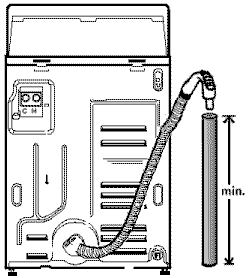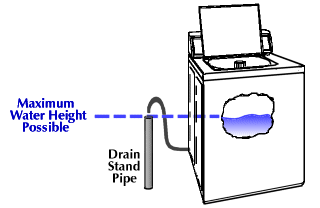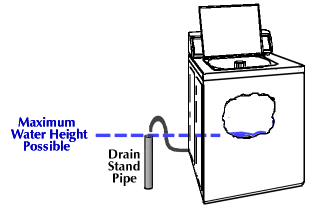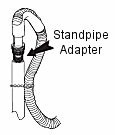If there are no obvious signs that the water is leaking out of the wash tub onto the floor, the cause is usually due to improper installation of the drain hose. The drain hose must be elevated prior to going into the household drain otherwise a siphoning effect will take place.
 A drainage standpipe or wash basin should be a minimum of 34" high to eliminate the possibility of siphoning.
A drainage standpipe or wash basin should be a minimum of 34" high to eliminate the possibility of siphoning.
The height of the drain will determine the maximum amount of water the washer can hold before siphoning begins. (see illustrations below)


Due to this effect, some clothes washer manufacturers now place the connection for the drain hose towards to top of the washer cabinet instead of at the bottom. This then makes the actual drain height irrelevant. However, siphoning can still take place if the drain hose is sealed into the stand pipe.

The drain hose should not be sealed into the stand pipe but instead just held in place using a nylon tie or just allowing the weight of the hose to hold it in place. If drain water splashes out of the stand pipe, it may be undersized or partially plugged and not allowing the waste water to drain away fast enough.

There is also an adapter available designed to mate a washer drain hose to a standpipe. This device allows for proper ventilation while at the same time minimizing the chance of waste water splashing out. Use of such a device can be handy to insure proper drain hose installation into a standpipe.


